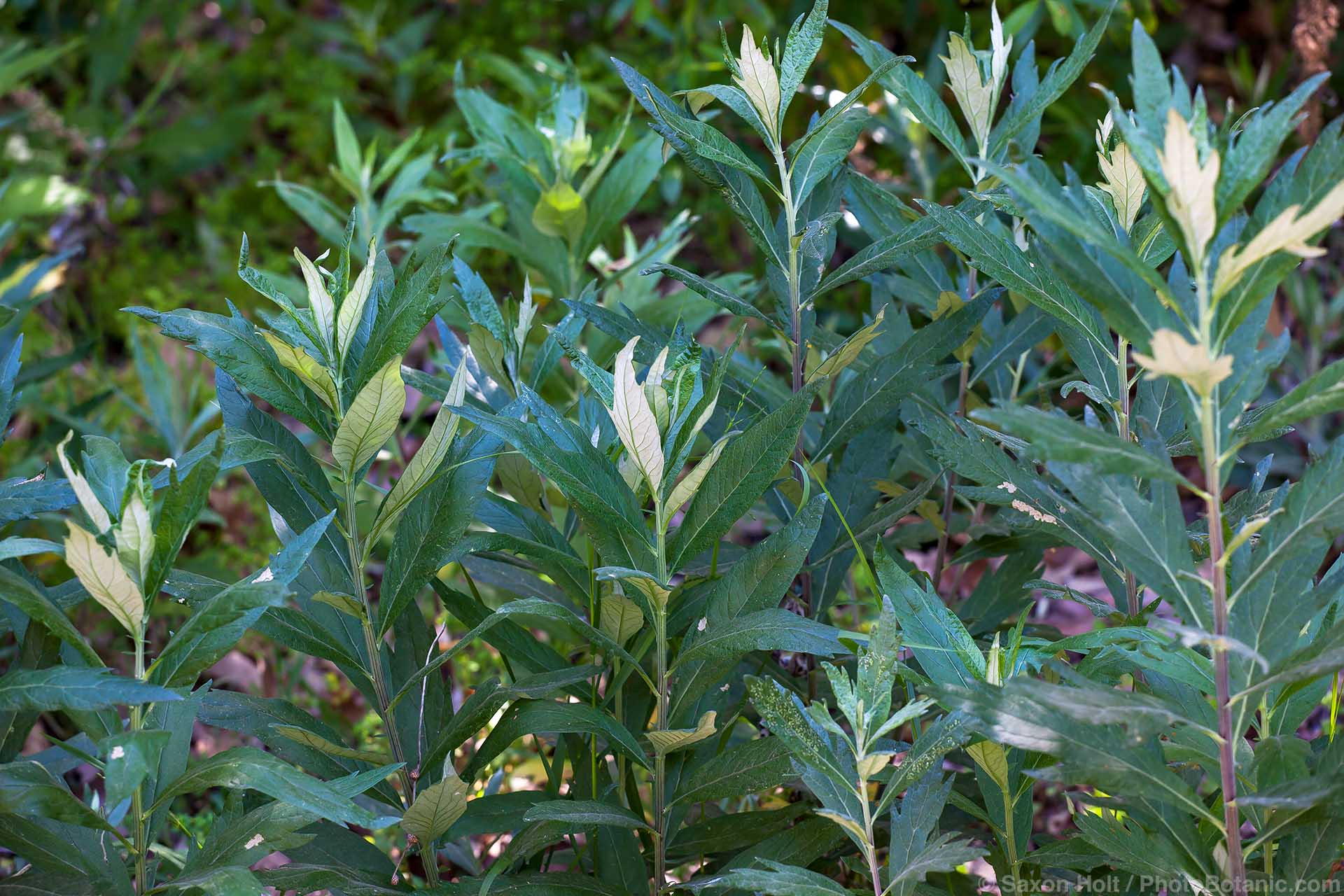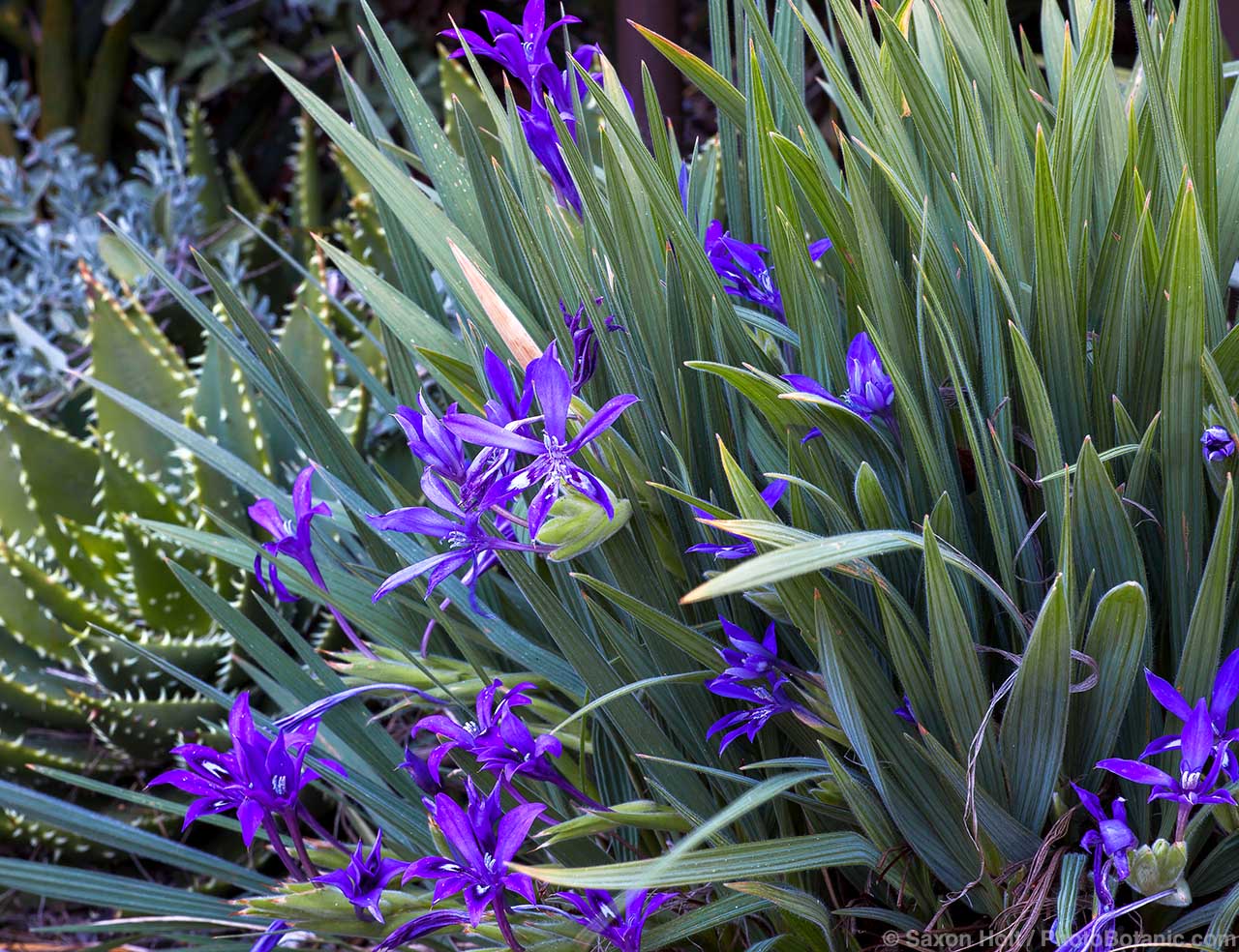Chilean Myrtle
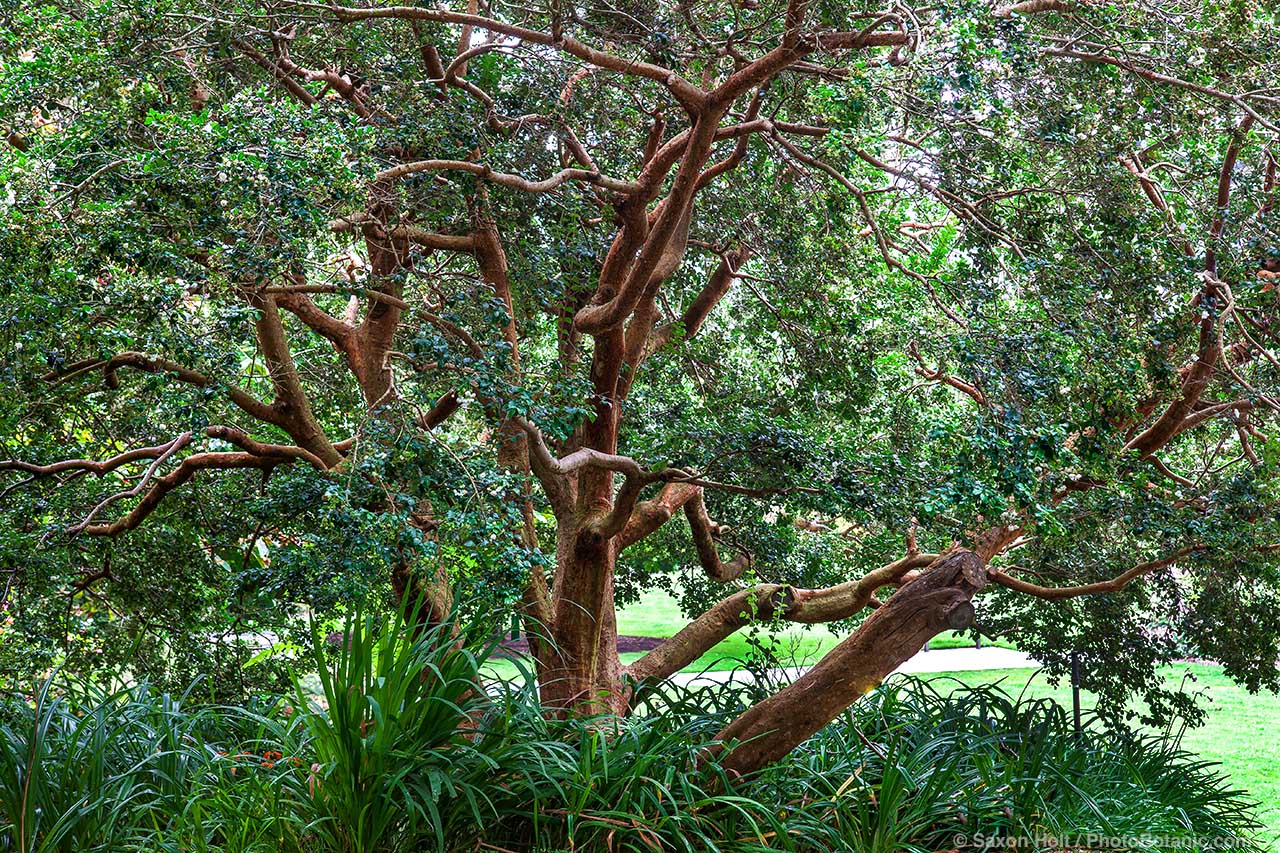
Share This!
Luma apiculata, sometimes known as Chilean myrtle, is a small to mid-sized, usually multitrunk or low-branching, evergreen tree. Leaves are small, leathery, dark green, and broadly oval with a short, acutely pointed tip. Bark is smooth and grayish tan, turning cinnamon brown with age and peeling to reveal patches of white beneath. Masses of fragrant, creamy white, mid-summer flowers with showy, brushlike, pinkish white stamens are followed by edible, purplish black berries in fall.
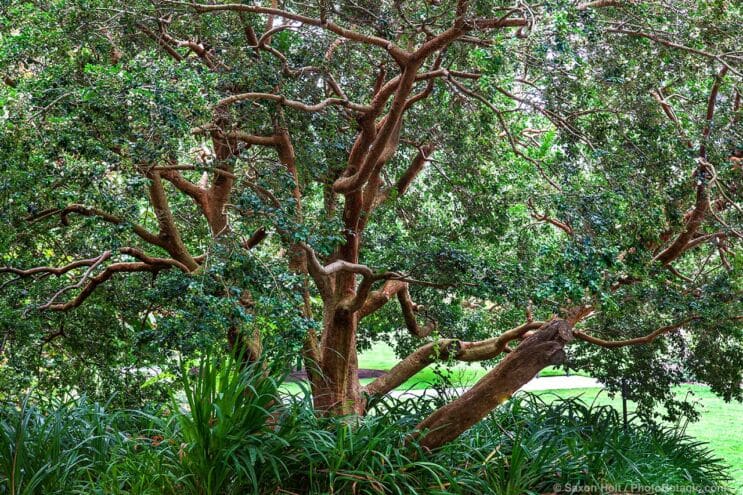
Limbed up and out of flower, trees can resemble a manzanita or a madrone, to which they are not related.
Luma apiculata is native to Chile and Argentina and is usually described as native to the Central Andes. As we saw with the Chilean puyas, that description doesn’t tell us much. Puyas are native to Central Chile (Zona Central), much of which has a mediterranean climate. Luma apiculata is found mainly in temperate rainforest in Southern Chile (Zona Sur) where summer dryness decreases in both length and intensity and rainfall becomes less seasonal. If this is considered part of the Central Andes, it must be its southernmost extension.
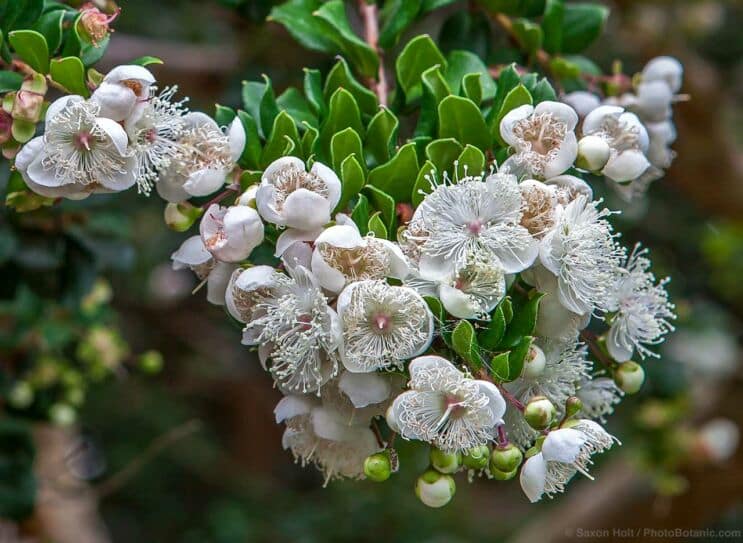
Luma apiculata flowers
Chile’s temperate rainforests begin at the southern edge of Central Chile, where mediterranean scrub vegetation is gradually replaced by forests of deciduous trees and a submediterranean climate prevails.
Luma apiculata is generally found farther south in the Valdivian Rainforest Ecoregion, a multi-story mix of deciduous trees and both broadleaved and coniferous evergreens. This ecoregion overlaps with what is known, mostly in the tourism industry, as the Andean Lake District. The region is so called for the many lakes formed by rivers that descend from the Andes into both Chile and southwestern Argentina.
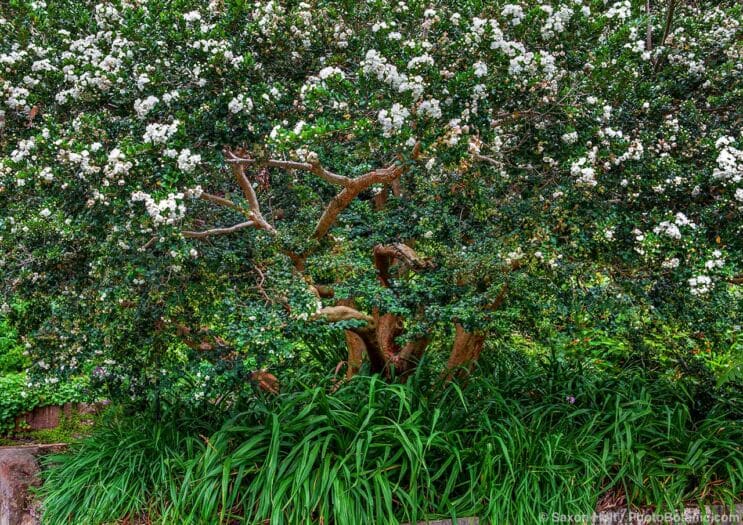
Luma apiculata flowering in the San Francisco Botanical Garden
On the western side of the Andes Mountains, in Chile, the marine west coast climate is mild year round with temperatures ranging from the low 40s to the low 70s. Average annual rainfall can be over 100 inches, but there are usually several months of summer dryness. Luma apiculata is one of the mid-story canopy trees in the Valdivian rainforest. Here the plant we know as a large shrub or small tree can reach over 50-60 feet tall.
Some of the most impressive stands of Luma apiculata are found across the border with Argentina in the eastern foothills of the Andes Mountains. Here, in the rain shadow of the Andes and away from the moderating influence of the Pacific Ocean, Argentina’s temperate rainforest thrives in a climate that is both colder and less wet.
Luma apiculata grows naturally in several of Argentina’s national parks, including Nahuel Huapi National Park and the eponymous Los Arrayanes (arrayan is the Spanish name for this tree). Trees in Los Arrayanes, which grow here in nearly pure stands, are estimated to be more than 600 years old. At 2,500 to 3,300 feet elevation, mean temperatures at Los Arrayanes range from 37 degrees F. in winter to 57 degrees in summer. Average rainfall, mostly in winter, is a little over 50 inches a year.
What does all this mean for gardeners wanting to grow Luma apiculata in their own summer-dry climate? Native origin does not determine success in the garden, but it does provide clues.
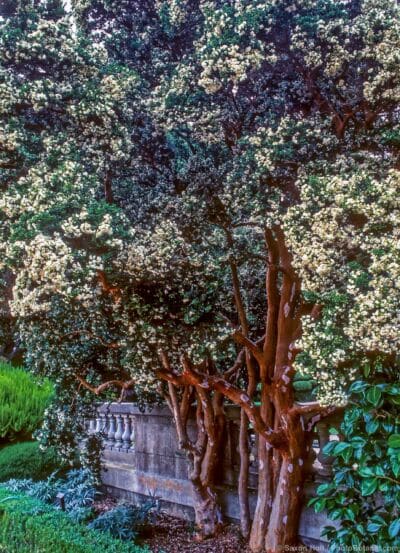
Luma apiculata in a private garden
Luma apiculata does best near the coast or near water bodies where humidity is not too low and where both winters and summers are fairly mild. That said, this adaptable tree accepts summer drought and freezing temperatures if not prolonged. It grows naturally from sea level to mid-elevations, along the coast and inland, and on both windward and leeward sides of Chile’s coastal ranges and the Andean cordillera.
Luma apiculata does well in northern California and the Pacific Northwest and has naturalized in western Great Britain, Ireland, and the Tasman District of South Island, New Zealand. It is moderately fast growing and is said to come back from even hard freezes, although under such conditions it generally remains a small shrub. The cultivar ‘Nahuel Huapi’, named for the Argentine lake where it grows, is said to be especially tolerant of frost.
Share This!
Related Articles
By: Nora Harlow
By: Nora Harlow
By: Nora Harlow



